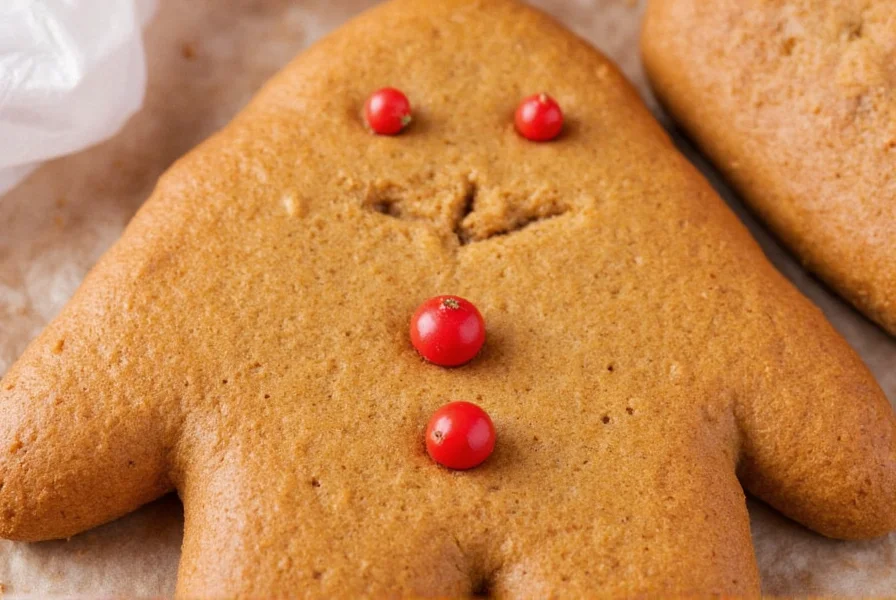What Exactly Is a Gingerbread Man?
A gingerbread man refers to a specific type of gingerbread cookie formed into a humanoid shape, typically with arms and legs outstretched. Unlike flat gingerbread cookies, these three-dimensional treats feature rolled dough cut into distinctive human forms. The classic gingerbread man contains ginger, cinnamon, cloves, and molasses, giving it that signature spicy-sweet flavor profile that has endured for centuries.
A Brief History of Gingerbread Men
Gingerbread itself dates back to ancient Greece and Egypt, but the gingerbread man as we know it emerged in 16th century Europe. The first documented human-shaped gingerbread appeared in England during the Elizabethan era. Historical records show Queen Elizabeth I ordered gingerbread figures crafted to resemble her royal guests - essentially creating the first edible portraits.
The popularity of gingerbread men spread throughout Europe, with German bakers developing elaborate versions during the 1800s. The Brothers Grimm's fairy tale \"The Gingerbread Man\" published in 1852 cemented these cookies in popular culture. This story of a runaway cookie being chased by various animals transformed gingerbread men from simple treats into cultural icons.
Traditional Gingerbread Man Recipe
Creating authentic gingerbread men requires the right balance of spices and proper dough consistency. Here's a reliable traditional recipe that yields perfectly shaped cookies every time:
| Ingredient | Measurement | Notes |
|---|---|---|
| All-purpose flour | 3 cups | Sifted, plus extra for rolling |
| Unsalted butter | 3/4 cup | Room temperature |
| Brown sugar | 3/4 cup | Packed |
| Molasses | 2/3 cup | Not blackstrap |
| Ginger | 2 tsp | Ground |
| Cinnamon | 1 1/2 tsp | Ground |
| Cloves | 1/4 tsp | Ground |
| Baking soda | 1 tsp | |
| Salt | 1/4 tsp |
Step-by-Step Baking Instructions
Follow these professional techniques for perfect gingerbread men every time:
- Combine dry ingredients (flour, ginger, cinnamon, cloves, baking soda, salt) in a bowl
- Cream butter and brown sugar until light and fluffy
- Mix in molasses until fully incorporated
- Gradually add dry ingredients to wet mixture
- Divide dough into two discs, wrap in plastic, and chill for at least 2 hours
- Preheat oven to 350°F (175°C) and line baking sheets with parchment paper
- Roll dough to 1/4-inch thickness between two sheets of parchment paper
- Cut shapes with cookie cutters and transfer to baking sheets
- Bake for 8-10 minutes until edges are firm
- Cool completely before decorating
Professional Decorating Techniques
Decorating gingerbread men transforms them from simple cookies to edible art. The most traditional method uses royal icing, which dries hard and creates clean lines. For beginners, start with simple designs before attempting intricate details.
Many home bakers struggle with icing consistency. The perfect royal icing has three stages:
- Flood consistency (like syrup) for filling large areas
- Medium consistency (like toothpaste) for outlining
- Stiff consistency (holds peaks) for fine details
Pro tip: Add decorations like candy eyes or buttons immediately after baking while the cookies are still warm for them to set properly.
Common Gingerbread Man Mistakes to Avoid
Even experienced bakers encounter issues with gingerbread men. Here are solutions to the most frequent problems:
- Dough too sticky? Chill longer or add small amounts of flour
- Cookies spreading too much? Ensure butter is properly chilled before mixing
- Shapes losing definition? Roll dough thicker (1/4 inch minimum)
- Icing not drying properly? Reduce humidity in kitchen or add more powdered sugar
- Flavor too bland? Increase ginger and spices by 25%
Regional Variations Around the World
Gingerbread men appear in different forms across various cultures:
- Germany: Lebkuchen figures with elaborate icing
- Sweden: Pepparkakor - thinner, crispier versions
- England: Fairground gingerbread with simple decorations
- United States: Larger, softer versions often used for gingerbread houses
Each region has developed unique traditions around these spiced cookies, reflecting local tastes and available ingredients throughout history.
Preserving Your Gingerbread Creations
Proper storage extends the life of your gingerbread men significantly. Store cooled cookies in an airtight container with parchment between layers. They'll stay fresh for 2-3 weeks at room temperature. For longer preservation (up to 3 months), freeze them in freezer-safe containers.
If you're creating gingerbread men as decorations rather than for eating, consider these preservation techniques:
- Use egg whites instead of royal icing for harder finish
- Apply a light coat of food-safe varnish
- Avoid humid environments
- Store in climate-controlled space
Final Thoughts on Gingerbread Man Tradition
The enduring popularity of gingerbread men stems from their perfect combination of history, tradition, and creative expression. Whether you're making them for holiday decorations, children's activities, or festive treats, understanding the proper techniques ensures success. Remember that slight variations in recipes and methods reflect the living tradition of gingerbread baking - what matters most is enjoying the process and sharing these spiced creations with others.
As you perfect your gingerbread man skills, consider experimenting with different spice blends, icing techniques, and presentation styles while respecting the centuries-old tradition that makes these cookies special.











 浙公网安备
33010002000092号
浙公网安备
33010002000092号 浙B2-20120091-4
浙B2-20120091-4